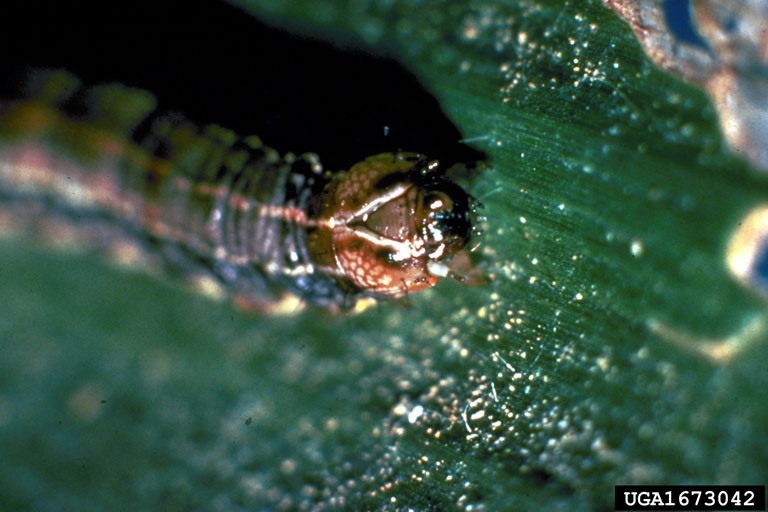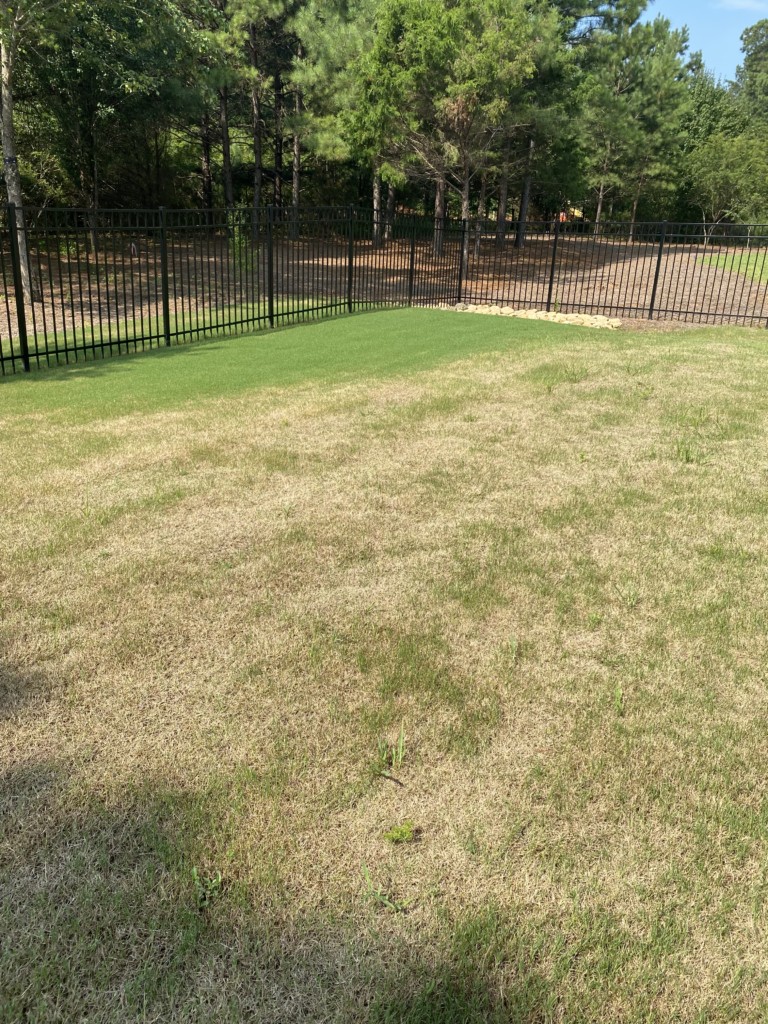We are witnessing outbreak populations of fall armyworm (Spodoptera frugiperda) in residential, and public lawns across Georgia at this moment (as of 30 Aug. 2021). The caterpillar stages of fall armyworm feed on the turfgrass leaf blades and stems. The turfgrass can go from a perfect green to complete brown within 2 to 3 days. A fall armyworm caterpillar can be easily identified by an inverted “Y” marking on the face (Image below).
In spring and summer, adults of fall armyworm moths fly north from south Florida through weather fronts each year. They go through several generations during summer and become noticeable in late summer and fall in Georgia.
Fall armyworm moths lay several hundreds of eggs (in eggmasses) on any surface they can find near the turfgrass, such as fences, walls of the house, porches, storage sheds, barns, trees, and shrubs. The eggmasses are off-white color, woolly or fussy mass. Eggs hatch within 48 hours in summer. The tiny caterpillars land on the turfgrass when the eggs hatch and immediately feed on turfgrass leaf blades. The small caterpillars are difficult to see as they are mostly hidden in the turfgrass canopy. As the size of the caterpillar increases, they become noticeable. When you have an infestation, you will see hundreds of them munching on the turfgrass leaf blades. A fully-grown caterpillar can reach approximately 1½ inches long.
Monitoring is the critical step for managing fall armyworms. Scout the edges around any structures or trees or shrubs in the lawns at least three times a week (especially in August and September) for the caterpillar infestations. Once they start feeding, they grow in size. It is easier to manage caterpillars when they are small-sized. Once an infestation is detected, it is time to treat it with insecticide. We have seen severe fall armyworm infestations on newly laid sod in residential and public lawns. Although moths can lay eggs on the sod (turfgrass) pallets during the transit or before planting the sod, newly laid sod is particularly vulnerable to fall armyworm attacks. Please pay close attention to the newly laid lawn and act immediately when an infestation is detected. Once an infestation occurs, the turfgrass may turn from green to brown. The affected lawn usually recovers within three weeks. Maintain the turfgrass with recommended irrigation and fertilizer, which is essential for establishing the newly laid sod. Bermudagrass and tall fescue are particularly susceptible to fall armyworm caterpillar feeding. Zoysiagrass is relatively resistant to fall armyworm infestation.
For management, try using Bt insecticide products, which are available to homeowners. They are effective when caterpillars are smaller and NOT effective on larger caterpillars. Products containing a pyrethroid insecticide, such as bifenthrin, cyfluthrin, deltamethrin, etc. (usually ends with “-thrin”), should provide adequate control. Newer insecticides, such as chlorantraniliprole and spinosad, are also effective on fall armyworm larvae. Remember, read the insecticide label before use because the label is the law.
For more reading click the link below.
Read the Armyworms in Sod publication for more information.

